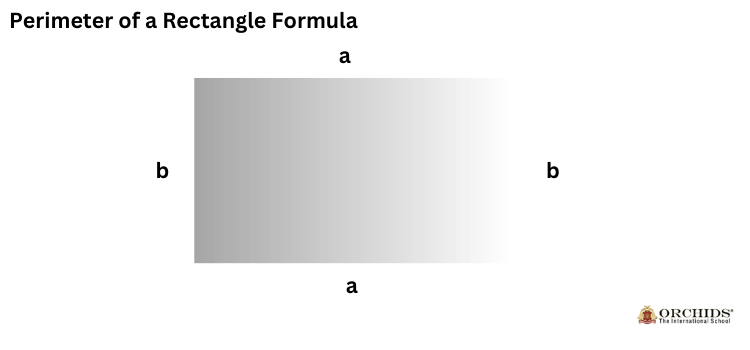Perimeter Of A Rectangle Formula
Perimeter of Rectangle
Imagine following the edge of your backyard or strolling around a park. The perimeter—a concept that helps us to grasp space and measurement—is the total distance you cover along these edges. From creating floor plans to laying out flower beds, knowing this limit is simple and necessary for many jobs using a rectangle. A straightforward yet effective formula allows one to find the perimeter of a rectangle:
Perimeter=2×(Length+Width)
This formula sums the length and breadth of any rectangular form then multiplies by two to instantly find the total distance around it. Knowing the perimeter of a rectangle will enable you to make wise and quick judgments whether your project calls for a new fence or renovation planning.
What is the Perimeter of Rectangle?
The whole distance around the outer edge of a rectangle is its perimeter. One finds it by summing the lengths of all four sides. The formula to get the perimeter of a rectangle is since its opposite sides are equal in length:
Perimeter=2×(Length+Width)
using this formula:
The length of a rectangle is its longer side.
The shorter side of the rectangle is **width**.
For instance, the perimeter of a rectangle with width of five meters and length of eight meters is computed as:
Perimeter=2×(8+5)=2×13=26 meters
In many different practical uses, such as figuring the length of trim needed for a room, the quantity of fencing needed for a garden, or even for basic chores like gift wrapping, the perimeter measurement is absolutely vital.
Perimeter of a Rectangle Formula

Other Related Sections
NCERT Solutions | Sample Papers | CBSE SYLLABUS| Calculators | Converters | Stories For Kids | Poems for Kids| Learning Concepts | Practice Worksheets | Formulas | Blogs | Parent Resource
Admissions Open for
Frequently Asked Questions
An integral formula provides a method to evaluate the integral of a function, representing the area under the curve of that function or the accumulation of quantities.
Integral tables offer precomputed antiderivatives for various functions, simplifying the process of finding integrals for complex or unfamiliar functions.
CBSE Schools In Popular Cities
- CBSE Schools in Bangalore
- CBSE Schools in Mumbai
- CBSE Schools in Pune
- CBSE Schools in Hyderabad
- CBSE Schools in Chennai
- CBSE Schools in Gurgaon
- CBSE Schools in Kolkata
- CBSE Schools in Indore
- CBSE Schools in Sonipat
- CBSE Schools in Delhi
- CBSE Schools in Rohtak
- CBSE Schools in Bhopal
- CBSE Schools in Aurangabad
- CBSE Schools in Jabalpur
- CBSE Schools in Jaipur
- CBSE Schools in Jodhpur
- CBSE Schools in Nagpur
- CBSE Schools in Ahmednagar
- CBSE School In Tumkur











